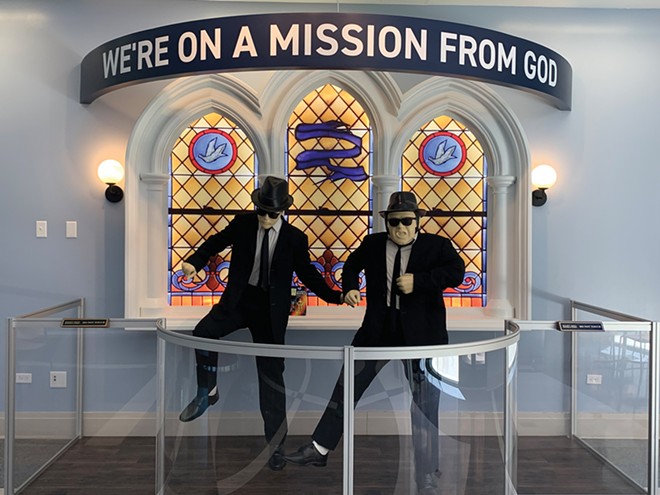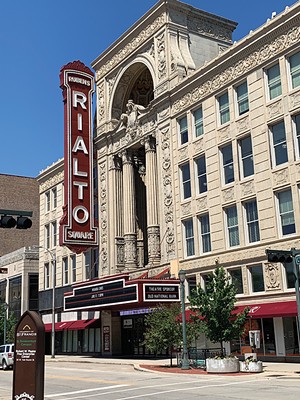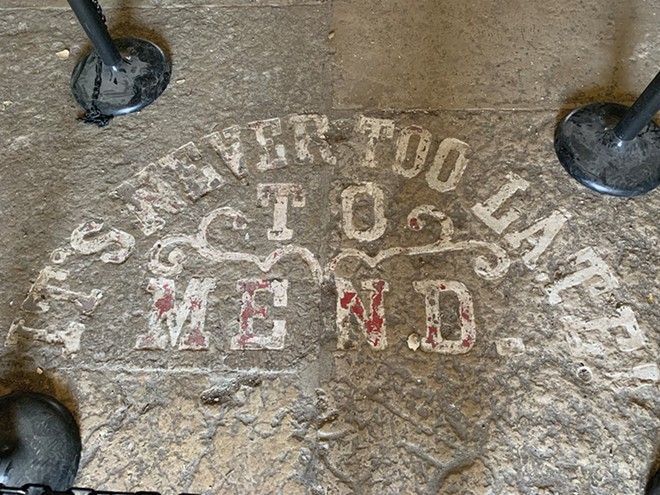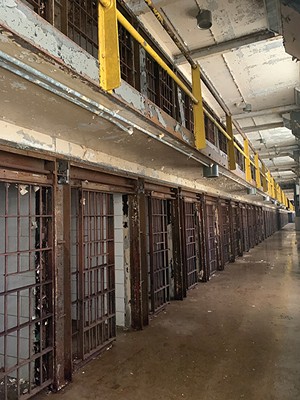
When Elwood picks up Jake from the old state prison in Joliet, the Blues Brothers reunite outside a huge gate on the prison's eastern edge. Now, thanks, to some dedicated guides, you too can walk through that gate but in the opposite direction.
What awaits you on the other side is a living, albeit decaying, history of the state's penal system from 1858 to 2002, complete with a tour of solitary confinement cells and a walk along the same cell block Jake (played by John Belushi) took in the 1980 movie. You might recognize the backdrop for several other movies as well.
You also will learn that some of the state's most notorious criminals spent time behind the walls, including kidnappers and murderers Nathan Leopold and Richard Loeb, mass murderer Richard Speck and gangster Baby Face Nelson, the only prisoner to escape the place.

Once you've "escaped" from the prison tour, you can make your way to downtown Joliet for some other history lessons at the compact Joliet Area Historical Museum and the magnificent Rialto Square Theatre. You also can drive on Route 66, take in some interesting architecture and try your luck at a couple of casinos.
Joliet, just off I-55 some 165 miles north of Springfield, may not have figured high on your bucket list, but a day or two there can provide a lot of enlightenment, none more so than at the prison. If seeing the grim rundown buildings doesn't scare you straight, then you might end up in Stateville Correctional Center, the state prison still operating north of town.
Christine Johnson, one of the old prison's guides, says the site is popular with high school groups, bus tours, photographers and alternative school students. Tours run from March to mid-November and include self-guided and private tours as options. In the summer, the prison hosts live music, car shows, food and drinks one evening a month.
Many of the structures, including the imposing administration building, fell apart when the prison closed in 2002, but plans for restoration are underway with a public/private partnership and a new $3.5 million state grant. The prison's hospital, dining hall, library, guard towers and honor dorm are among the buildings still standing but not yet accessible to visitors. Fires, vandalism and weather also took their toll.
Johnson says the prison was a fully functioning institution opened in 1858 to hold 1,600 prisoners but had swollen to 2,000 in the late 1800s. "It was a city within a city and had beautiful landscaping," cared for by inmates, she says.
It did not get indoor plumbing until 1951, despite being built on a natural aquifer. So prisoners had a slop bucket and another vessel for drinking water.
The abundant supply of water and the area's limestone quarries made Joliet a good choice for the state's second state penitentiary, following the first at Alton. "They decided that prison was too much of a hellhole, so they built this as another hellhole," Johnson says.
Two spots on the tour give credence to her claim. An original cell for two prisoners is only 4 by 8 feet with a 7-foot ceiling, crowded with bunk beds. At times a third prisoner was added and forced to sleep on the floor.

The solitary confinement block also can give you the shivers, with its two-story rows of small cells locked by double doors. Still visible on the entry floor is the "It's Never Too Late To Mend" inscription that also shows up in The Blues Brothers movie.
A cheerier activity for movie fans is snapping their picture with mannequins sporting the black and white outfits the brothers wore throughout the film and donated to the Joliet Area Historical Museum and Route 66 Welcome Center downtown.
The small museum, housed in a former Methodist church, includes exhibits on the prisons, limestone quarries, the digging of the nearby I & M Canal, the railroads that still run through town, various businesses and notable citizens.
A few blocks away, you can attend an event at the Rialto Square Theatre, opened in 1926 as a vaudeville movie palace and continuing to draw musicians, comedians and other performers. While similar entertainment venues fell into disrepair, a "Save the Rialto" campaign succeeded after demolition was slated in the 1970s.
Visitors can marvel at the original ticket booth, the inner lobby modeled after the Hall of Mirrors in the Palace of Versailles, and the Czech crystal chandelier, the largest in the United States and seventh largest in the world.
Other original features include sculptures, floor tiles, a rotunda fountain, coat check rooms, stage curtain, usher call buttons and balcony seats. Various restoration efforts included replacing the main floor seats with those from a closed Indianapolis theater.
Docent Colette Majchrowski says five days of celebration accompanied the Rialto's original opening, complete with a parade of 187 vehicles. The Barton Grande theater pipe organ could add sound effects for silent movies. Such legendaries as Red Skelton, Bob Hope, the Marx Brothers and Tony Bennett graced the stage.
Legend has it that a couple of ghosts also call the Rialto home, according to Majchrowski.
Elsewhere downtown, visitors can take an architecture walking tour (pick up a map and brochure at the welcome center), drive on a section of Route 66 and the Lincoln Highway (US 30) and head to one of two casinos in the area. A few blocks away is Joliet Township High School, a block-long example of the iconic yellow limestone construction that brought the old prison to town.
For more information about Joliet, go to www.visitjoliet.com. To schedule a tour of the old prison, go to www.visitjolietprison.org.
Mary Bohlen is a Springfield freelance writer who specializes in finding interesting nearby spots to visit. She hopes to continue avoiding solitary confinement.


